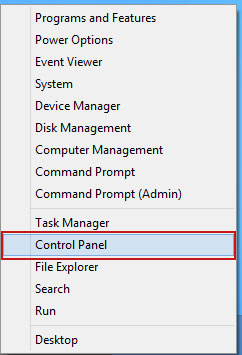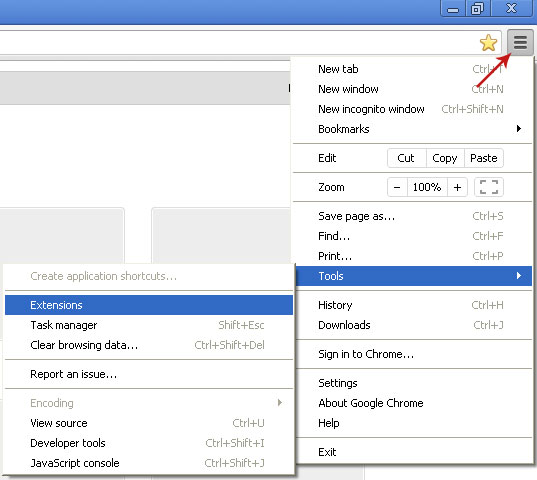There are three methods that lead to a browser hijacker installation, all of them frustratingly almost unavoidable. The first method is something called a 'drive by installation' which is when a website has been compromised by a potentially unwanted program or a browser hijacker that in turn infects visitors to the site. The second, and most common route to getting infected by a browser hijacker is via downloads. The majority of installations are caused by a browser hijacker being bundled with another program, file or application. That means if you download anything ranging from a movie to an instant chat app, you can wind up with a browser hijacker that displays fake virus warnings and scam phone numbers such as 1-866-436-9418 installed on your PC. Thirdly, it may even come pre-installed when you buy a new PC.
So let's assume the crisis has already happened and you have a browser hijacker installed. So, if you've woken up one morning only to find that your computer is infected with a browser hijacker then you no doubt would like to know how to remove it.
Many browser hijackers can be simple to delete and here's how to do just that if you are running on the Microsoft Windows operating system:
- Go to the Windows Start button in the left hand corner of your screen
- Next go to the Control Panel option
- Click on Programs and then Uninstall or Change a Program
- Take a look at the list of programs you have installed, locate the unwanted one and click on it to highlight it and then hit the uninstall button at the top of the list. If you can't find anything suspicious then list all programs by installation date. One of the most recently installed programs will likely be the culprit. In may case it was called AdFreeApp. Quite ironic, isn't it?
Now that you have removed your unwanted program you should shut your PC down and restart it. Double check that you have actually got rid of it as some browser hijackers can be a bit sticky and will leave a component on your computer. Therefore if the offending virus warning is still very much in residence you can try running your security software program before rebooting again.
If it's already too late and your computer has been infected by a browser hijacker then please follow the steps in the removal guide below. If you have questions, please leave a comment down below. I will be more than happy to help you. Good luck and be safe online!
Written by Michael Kaur, http://deletemalware.blogspot.com
1-866-436-9418 Pop-ups Removal Guide:
1. First of all, download anti-malware software and run a full system scan. It will detect and remove this infection from your computer. You may then follow the manual removal instructions below to remove the leftover traces of this malware. Hopefully you won't have to do that.
2. Remove 1-866-436-9418 pop-up related programs from your computer using the Add/Remove Programs control panel (Windows XP) or Uninstall a program control panel (Windows 7 and Windows 8).
Go to the Start Menu. Select Control Panel ? Add/Remove Programs.
If you are using Windows Vista or Windows 7, select Control Panel ? Uninstall a Program.

If you are using Windows 8, simply drag your mouse pointer to the right edge of the screen, select Search from the list and search for "control panel".

Or you can right-click on a bottom left hot corner (formerly known as the Start button) and select Control panel from there.

3. When the Add/Remove Programs or the Uninstall a Program screen is displayed, scroll through the list of currently installed programs and remove the following:
- AdFreeApp
- LyricsSay-1
- Websteroids
- BlocckkTheAds
- HD-Plus 3.5
- and any other recently installed application

Simply select each application and click Remove. If you are using Windows Vista, Windows 7 or Windows 8, click Uninstall up near the top of that window. When you're done, please close the Control Panel screen.
Remove 1-866-436-9418 pop-ups from Google Chrome:
1. Click on Chrome menu button. Go to Tools ? Extensions.

2. Click on the trashcan icon to remove AdFreeApp, LyricsSay-1, Websteroids, Quiknowledge, HD-Plus 3.5 and other extensions that you do not recognize.

If the removal option is grayed out then read how to remove extensions installed by enterprise policy.

Remove 1-866-436-9418 pop-ups from Google Chrome:
1. Open Mozilla Firefox. Go to Tools ? Add-ons.

2. Select Extensions. Click Remove button to remove AdFreeApp, LyricsSay-1, Websteroids, Quiknowledge, HD-Plus 3.5 and other extensions that you do not recognize.

Remove 1-866-436-9418 pop-ups from Internet Explorer:
1. Open Internet Explorer. Go to Tools ? Manage Add-ons. If you have the latest version, simply click on the Settings button.

2. Select Toolbars and Extensions. Click Remove/Disable button to remove the browser add-ons listed above.



0 Response to "Remove 1-866-436-9418 YOUR COMPUTER MAY HAVE ADWARE / SPYWARE VIRUS Pop-up (Uninstall Guide)"
Post a Comment